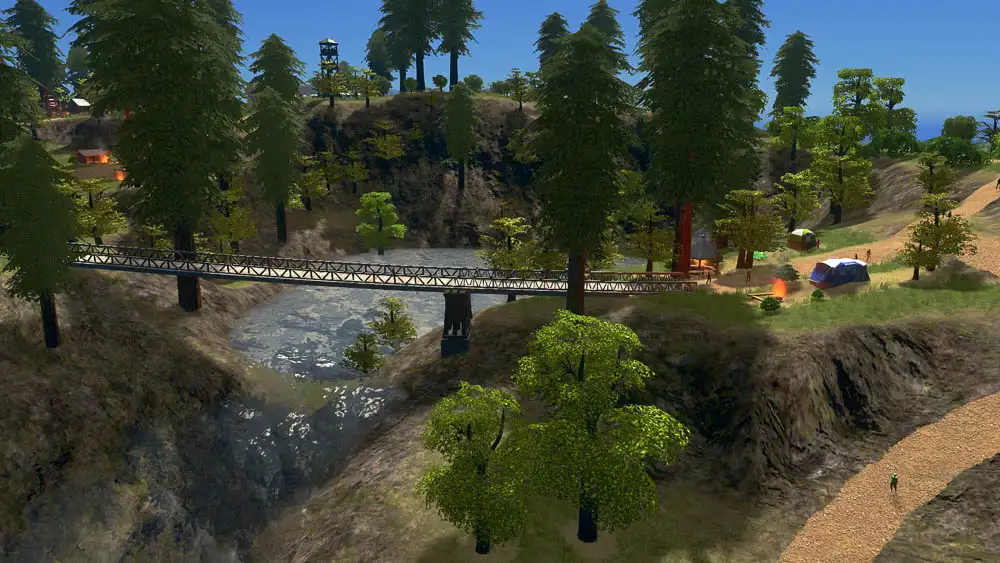
Any ‘best DLC’ list is always going to be subjective. I’ve tried to think about which packs are the most impactful and whose additions are useful in pretty much every city. That said, your priorities will change the order: if you’re a tram aficionado then Snowfall might jump up your list. If building clean, green, vegan cities is your thing, then Green Cities might be your first port of call.
The best advice for a new player is to start with the base game. Play for a while and see what aspects you enjoy most, then buy DLC that gives you more of that. And don’t worry about missing out - each expansion launched with a substantial free update that incorporated a lot of important fixes and improvements. That means the base game is a lot more mature and complete than it was at launch, and is a fantastic experience even with nothing else installed.
The most important DLC
Essential:
Mass Transit, Parklife, and either Industries or Campus
Great:
After Dark, Green Cities
Nice to have:
Snowfall, Natural Disasters
I initially wanted to rank these 1 through to 7, but ended up with these groupings instead. Industries is new so it’s hard to know exactly where to place it. I’ll come back to this list after a few months to see if I still stand by it being an essential addition.
Taking stock of all the expansions, I don’t think any of them are bad. Some could have been taken further (Snowfall, for example) but all make valuable contributions and I use some bits of all of them in most of my cities.
Below I’ve done a mini-review of each DLC, with links to the main review page. If you choose to pick up any of the expansions and want to support the site (thanks a lot!), just use my affiliate links, also below.
After Dark
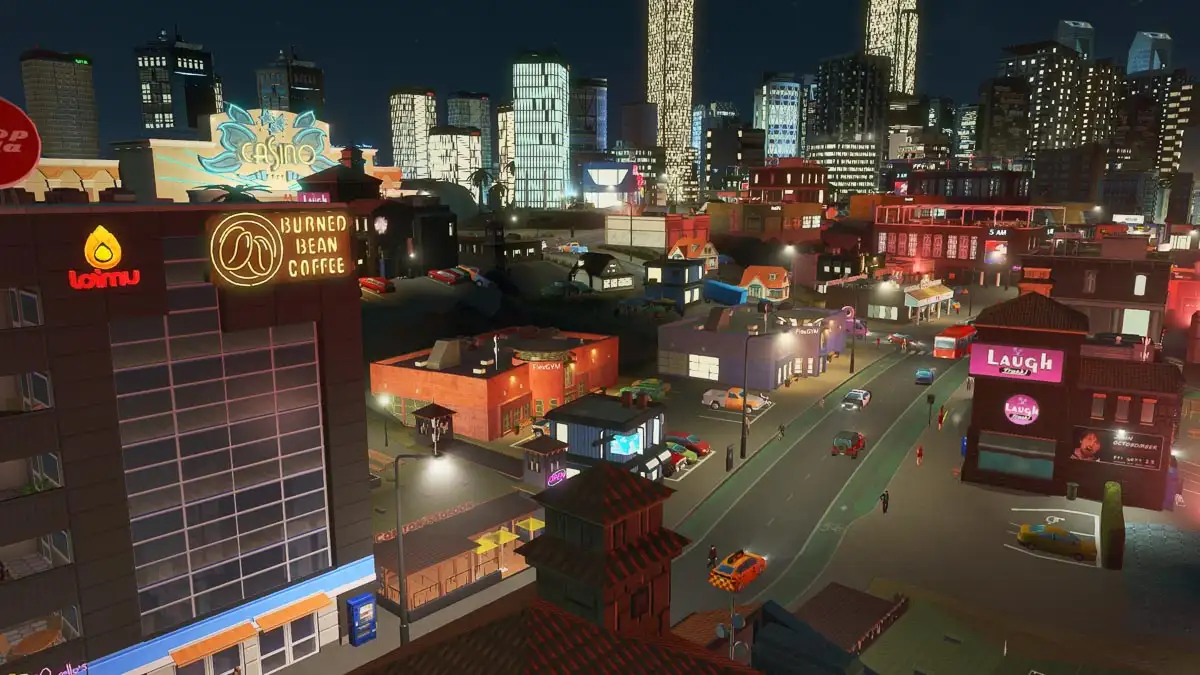
Colossal Order’s first big DLC did a lot to diversify the game’s economies and bring tourists into the city. Commercial zones can specialise as leisure or tourism areas. Instead of generic shops, districts will now house roudy bars, clubs and cafes or high rise hotels, souvenir shops and restaurants.
Functionally, the new areas let a city really double down on tourism or become a nightlife capital. Visually, they give the game a gritty edge that it otherwise lacks. Seedy waterfront towns full of bars can contrast with clean, family friendly beach resorts.
Cycling makes a major contribution to traffic flow and efficient cities. By greatly extending the distance a resident can travel without resorting to driving opens up lots of creative ways to manage movement around the city. Bike highways can drastically improve traffic management and are cheap and simple to set up. What holds the expansion back is a lack of depth and micromanagement. The new areas can’t level up which doesn’t incentivise good city service provision. That said, they are brilliant for diversity and variety and make cities feel much more alive.
Read my After Dark review.
Buy After Dark: Humble Bundle.
Snowfall
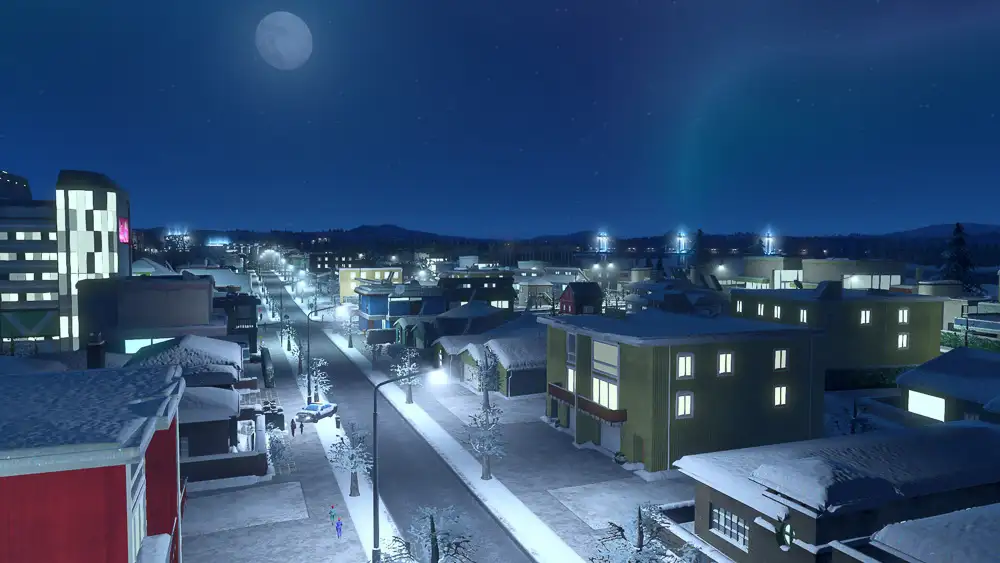
The game’s second expansion took us up to the far north, to a region where snow falls year round and life is tough. Heat pipes and district heating systems are in high demand as your citizens try to stay warm. Loads of buildings get replaced with snow-appropriate ones like ice rinks.
Where Snowfall fell down is that its most important features largely live self-contained in just three maps. That’s not a criticism of those maps, either. They are beautiful to play on and the freezing temperatures add some much-needed challenge in the early to mid-game.
But everywhere else, the effects of Snowfall are much less keenly felt. Play on a tropical map without any tram lines and you wouldn’t even know you’ve got it installed. The hope of seasons wasn’t fully realised and snow stays in one place. Winter maps never leave winter, and the other maps never really enter it. That means that Snowfall is a bit tricky to recommend above other expansions. Building a harsh northern town can be very romantic, and trams are an outstanding addition that I use in almost all my cities. But if neither of those are deal breakers for you, then you can safely get other DLC first.
Read my Snowfall review.
Buy Snowfall: Humble Bundle.
Natural Disasters
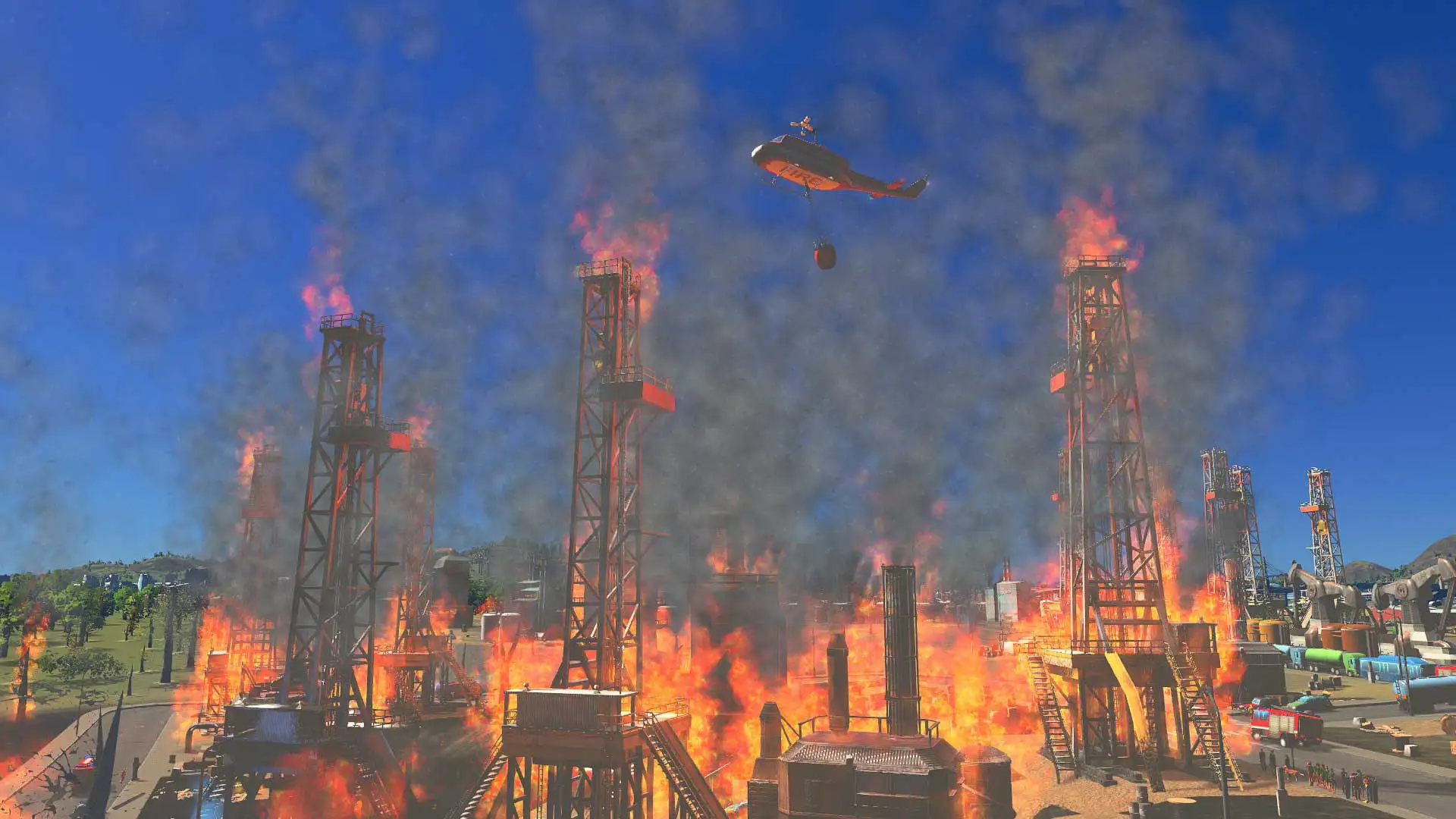
An expansion that destroys your city is always going to be a little divisive. Catastrophes have long featured in city builders. Colossal Order didn’t include an alien invasion but the disasters are still suitably epic. They have the potential to absolutely batter your city and leave permanent scars in their wake. New shelters and early warning systems give you the opportunity to save the majority of your residents’ lives and quickly begin to rebuild. Elsewhere, watch towers and helicopters give you tools to deal with new problems like forest fires.
The disasters are very well realised and there’s no problem with the quality of the product. But in terms of priority, Natural Disasters is probably the hardest DLC to quantify because it depends so much on your own playstyle.
I bought it because I wanted the helicopters, it was on sale and I was happy to support the developers. But I don’t play with disasters turned on (you can still use the helicopters without them). The disasters certainly add excitement and drama but that’s not what I play Cities: Skylines for. If you don’t either, then I’d suggest leaving this one until later or skipping it.
Buy Natural Disasters: Humble Bundle.
Mass Transit
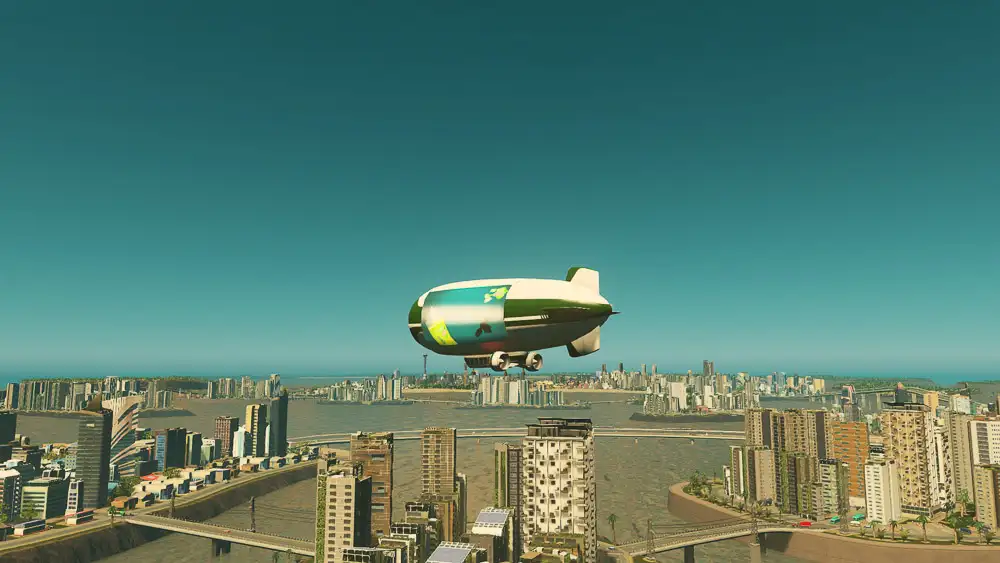
Despite being called Mass Transit, only the monorail can handle high passenger throughput. The other three transport types - cable cars, ferries and blimps - all suffer a bit from low-ish capacity. All of them are still useful, but a bit niche. Where things get really Mass Transit-y are with the new hub buildings. Being able to combine six train lines and a metro station or two train, two monorail and a metro in one building makes for extremely efficient public transport. Passengers can hop from one line to another without leaving the building and clogging up the streets.
Linking transport lines like this is not only surprisingly satisfying (as long as you’re sufficiently geeky), it also helps you scale up a public transport system to deal with tens or hundreds of thousands of people.
Mass Transit rates highly for me because even though the transport types (if we’re being harsh) could be a bit gimmicky, I end up using at least one or two of them in every city. They breathe life into an area and let you get creative. A canal and ferry based area or a cable car into your nature reserve just feel great to build.
The hub buildings appear in every city I build, and often form the centrepiece of a whole district, smoothly distributing people in multiple directions and handling thousands of cims a week without batting an eyelid.
Read my Mass Transit review.
Buy Mass Transit: Humble Bundle.
Green Cities
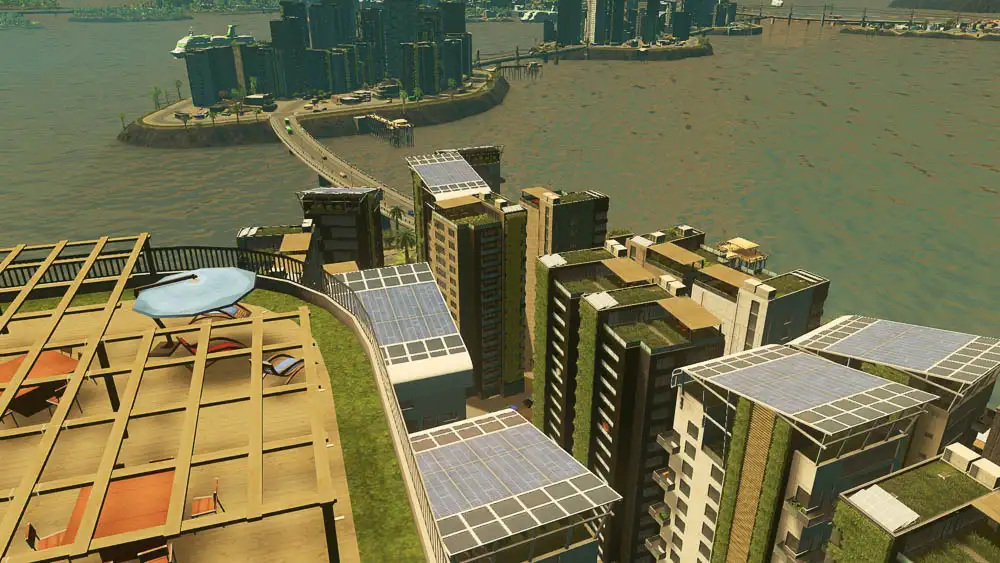
The eco-friendly expansion does two big things: it cleans up your cities, and adds a ton of visual diversity. Self-sufficient housing, organic and local produce shops, and the towering IT Clusters change the way your city looks in a significant way. Neighbourhoods built using these new districts look sharp and modern, offering you a way to avoid homogeneity.
The range of new service buildings do a great deal to fix the city’s problems. Water pollution can become a distant memory with new treatment plants and the recycling centre produces much less ground pollution than the incinerator.
Powerful renewable energy generators can completely - and easily - replace all the dirty production in the city and even stand in for nuclear. A range of new policies designed to reduce waste and car use can support the idea of gleaming, healthy cities ready for the future.
I use at least a few of Green Cities’ features in every city I build. I would sorely miss the ability to clean things up - especially those water treatment plants. What holds me back from recommending it as an essential expansion is that there are other, more impactful additions. I feel like Green Cities adds a lot of welcome variety but for a new player I’d suggest getting one or two of the others first.
Read my Green Cities review.
Buy Green Cities: Humble Bundle.
Parklife
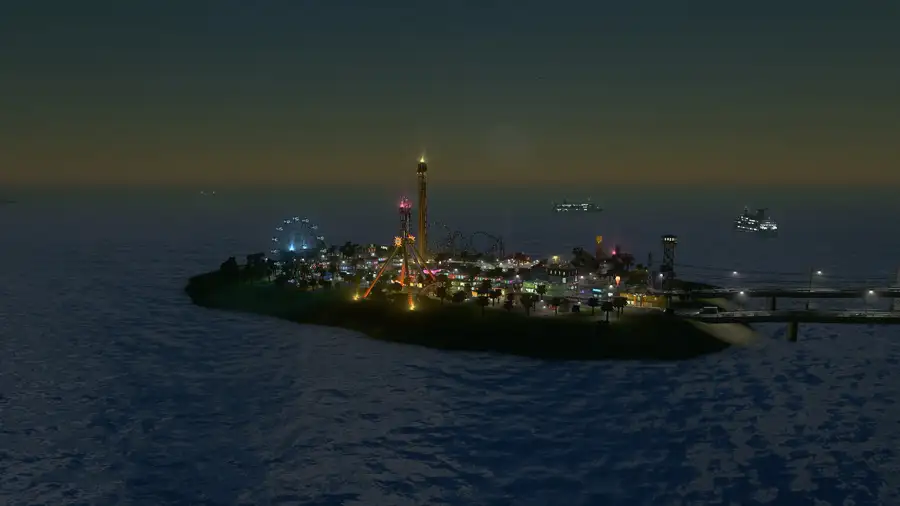
Until you install it, it’s a bit difficult to understand how Parklife works. Setting up and building one of the four new park types is completely different to how leisure stuff functions in the base game. Each type - city park, zoo, amusement park and nature reserve - has its own set of buildings and paths that exist within an area that you draw in the same way as a district.
Buildings don’t need to be next to roads - they lock against paths instead and everything can be laid out exactly as you want it. Hedges, fences, trees, tables and all sorts of props can be placed wherever you like. Each addition improves the park’s attractiveness, drawing in locals and tourists.
As the park becomes more popular, it will level up, unlocking new buildings until it maxes out at level 5. The biggest parks pull in lots of tourists and make good amounts of money. They offer a type of ‘handmade’ gameplay that changed the way I played for the better. By encouraging you to think more about aesthetics, Parklife helps you learn how to make better looking cities.
The parks also bring whole districts of the city to life. Expansive, wild nature reserves and dense, rowdy theme parks are my favourites. In fact, when I first load into a new map, spotting a great nature reserve location is often the first thing I do!
Parklife rates highly for me because the parks I build are usually among the things I’m most proud of in a city. They define whole areas and the process of building them is fun, creative and interesting.
Read my Parklife review.
Buy Parklife: Humble Bundle.
Industries
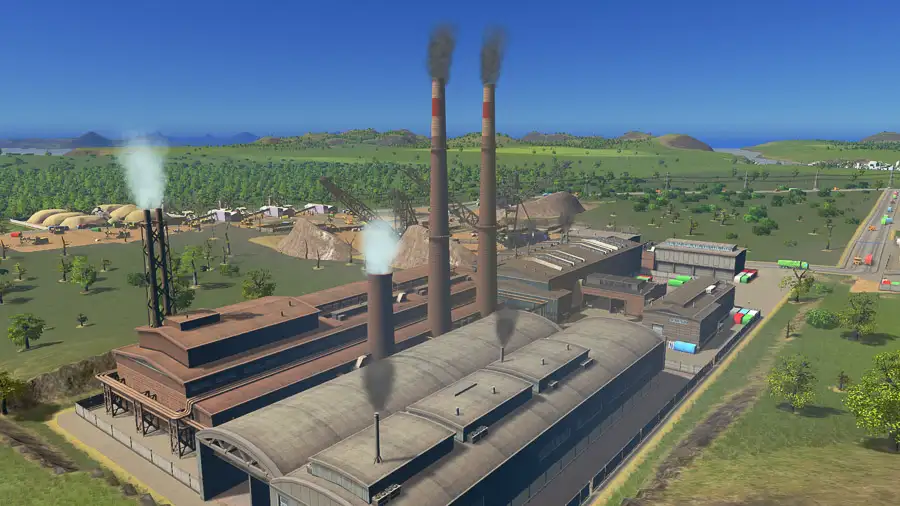
As I write this, Industries hasn’t been out long enough to fully evaluate it in context. I think it will either be one of the must-have expansions, or sit alongside Green Cities as a pack that greatly expands on a certain style of play.
The new industrial areas are vast, with some of the biggest buildings in the game. There is the potential to build gigantic industrial skylines that dominate the whole region. It’s not just visual, either. The supply chain information and control that’s added in Industries is a complete overhaul for the game. It is well thought through, and builds on Parklife’s successful zoning and upgrading systems. It also builds on the game’s most challenging aspect - traffic management - by making you plan to deliver goods regularly and quickly.
Until now, industrial-focused cities suffered from a lack of depth and control of the supply chain system. Industries completely overhauls all of that, giving a satisfying experience of planning, designing and experimenting.
The sheer size of the things are both a strength and potential weakness. I think to get the most out of the DLC, a city will need to put aside plenty of space for industry, rather than adding it as an afterthought or to fill a gap.
Read my Industries review.
Buy Industries: Humble Bundle.
Campus

Campus, the eighth major expansion for the game, completely rethinks how higher education works in the game. It takes the systems and mechanics introduced in Parklife and Industries, and applies them to universities.
Gone is the old passive one building university system, and in comes enormous campuses that define whole sections of the city. Campus reputation can fall as well as rise, and levelling up depends on generating academic work, student numbers and attractiveness.
There are five large new sports arenas that host Varsity teams. They work the same way as the Match Day DLC stadium, but also contribute to the prestige of the university.
There are huge array of new buildings, and each of the three university types has a distinct architectural style. There are 9 faculties - three for each campus type - which are major teaching buildings that also provide bonuses to the city based on what courses they offer.
Campus is an excellent addition that finally makes education a deep system. It also weaves together systems better than Parklife and Industries, and lets us give cities a new focal point.
Here’s my Campus review.
Buy Campus: Humble Bundle.